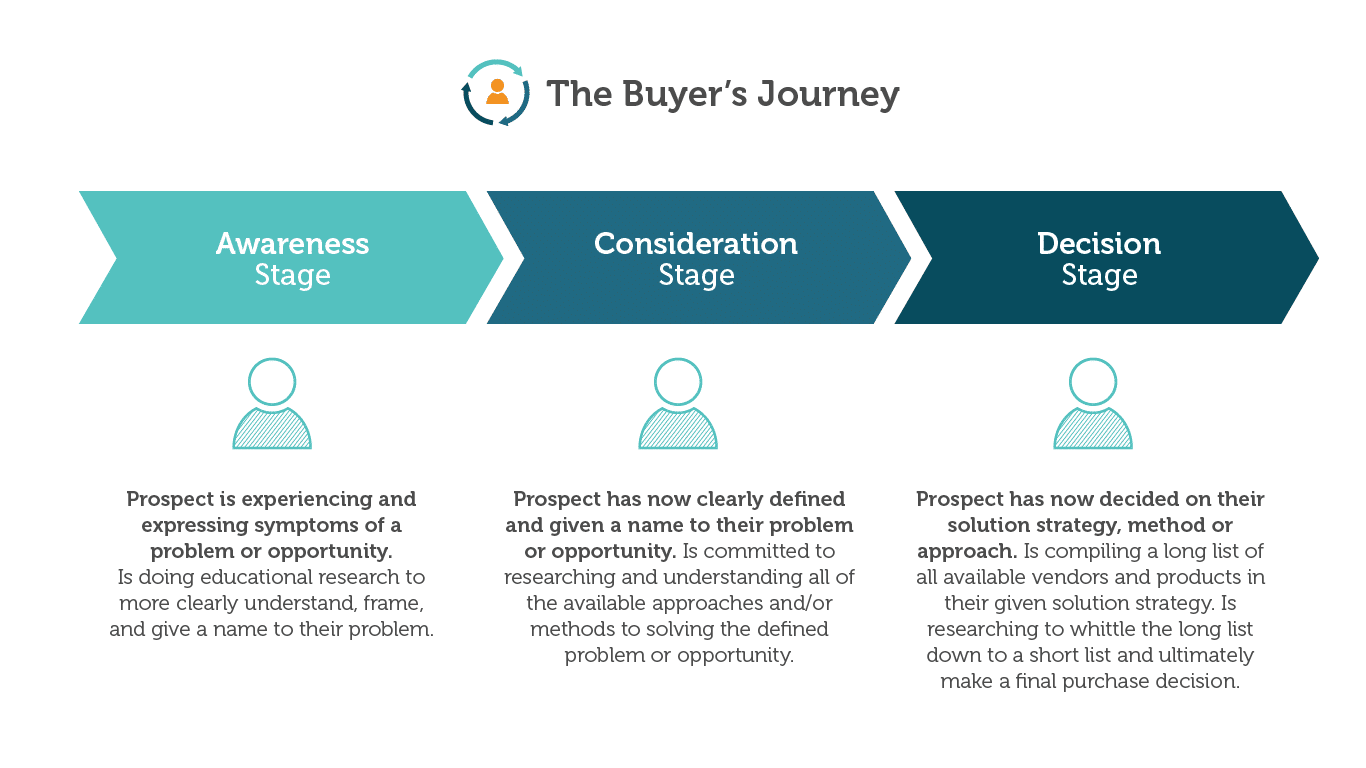
When starting any keyword research project, I start by asking myself the standard questions; 'What's the search volume?', 'How competitive is the phrase?', 'Who else ranks for the query?'.
This is keyword research 101. But over the last 24 months or so, 'user intent' has become all the rage within digital and inbound marketing. So now we find ourselves asking questions like 'What is the user actually looking for?', 'What does the SERP look like?', 'What stage of the buyer's journey is the user at?'.
I spoke at an event in Bristol recently, where I explained the process we use daily for keyword research and mapping. During that process, we always assign a stage of the buyer’s journey to a keyword to help our clients understand what a user might expect to find when using that term. You can find more on that here.
VERY happy today. With a little help from some existing resources I've managed to build a new formula to help automatically categorise keywords based on the users intent... #keywordresearch #seo pic.twitter.com/AMy5HpQ7bx
— Daniel Brooks (@seodanbrooks) April 16, 2019
Before we start - what is the buyer’s journey?
Simply put, the buyer’s journey is the process of research and decision making that leads up to a final action. By labelling our keywords throughout the various stages, we can better optimise our content for users, keeping both them and search engines happy.
At Aira, we label keywords with the following three stages:
- Awareness - realising there is a problem.
- Consideration - looking for solutions to that problem.
- Decision - ready to take action and solve the issue.
 The problem with manually assigning the stages
The problem with manually assigning the stages
Time. Simply time; that’s the problem with doing things manually. Don’t get me wrong, it works and you’re not relying on a formula to help you out, but my god it can make an hour long task take at least two or three.
That was the inspiration behind creating this. With the end goal being to help our team at Aira and other SEOs become more efficient.
Step one: Identifying trigger words
Before I started building the formula, I needed to generate a list of words and short phrases that fit into each of the stages within the buyer’s journey.
Now I do a lot of research, so I built this list over a period of a few months simply by picking out certain words that were appearing a lot. For example, any search query that included the following was included within the awareness category (as well as others):
- What
- Who
- When
- Where
- Can
- Are
- How
- Improve
- Get better
- Get more
A caveat here is that all of these are going to vary depending on your industry and business. When creating your list of trigger words, analyse the phrases that users are searching with to find your products, services or blog posts and include them. These are based on research completed for the Aira website.
The following are some examples of trigger words I would typically associate with someone using consideration stage queries:
- Compare
- Best
- Guide
- Comparison
- Service
- Directions to
- Review
And these for decision stage users:
- Agency
- Products
- For sale
- For rent
- For hire
- Order
- Price
- Cost
- Trial
- Supplier
Step two: Building the formula
Once that I knew which terms were frequently falling into certain stages, I could start to build something that would identify a trigger word within a phrase and automatically label it within my research document - Yaaaaas!
However, that was easier said than done.
When I initially tweeted the clip of my example I made no secret of the fact that this was based loosely on a similar formula that was put together by Rory Truesdale that helped him understand the intent within SERPs. Here’s a link to that article.
Using what Rory had learned, I started to build a very basic formula that uses IF, OR, NOT, ISERR and SEARCH functions to pull the words from phrases and label them.
Here’s a snippet of the formula that you can use:
=IF(OR(NOT(ISERR(SEARCH("are",A3))),NOT(ISERR(SEARCH("article",A3))),NOT(ISERR(SEARCH("better",A3))),NOT(ISERR(SEARCH("boost",A3))),NOT(ISERR(SEARCH("can",A3)))=TRUE,"Awareness",IF(OR(NOT(ISERR(SEARCH("alternative",A3))),NOT(ISERR(SEARCH("application",A3))),NOT(ISERR(SEARCH("comparison",A3))),NOT(ISERR(SEARCH("benefit",A3))),NOT(ISERR(SEARCH("best",A3))),NOT(ISERR(SEARCH("companies",A3))),NOT(ISERR(SEARCH("directions to",A3))),NOT(ISERR(SEARCH("estimation",A3))),NOT(ISERR(SEARCH("feature",A3))),NOT(ISERR(SEARCH("hardware",A3))),NOT(ISERR(SEARCH("installation",A3))),NOT(ISERR(SEARCH("like",A3))),NOT(ISERR(SEARCH("leading",A3))),NOT(ISERR(SEARCH("near me",A3))),NOT(ISERR(SEARCH("or",A3))),NOT(ISERR(SEARCH("program",A3))),NOT(ISERR(SEARCH("review",A3))),NOT(ISERR(SEARCH("service",A3)))=TRUE,"Consideration",IF(OR(NOT(ISERR(SEARCH("acquire",A3))),NOT(ISERR(SEARCH("agency",A3))),NOT(ISERR(SEARCH("agent",A3))),NOT(ISERR(SEARCH("analysis",A3))),NOT(ISERR(SEARCH("apply",A3)))=TRUE,"Decision","Intent Not Found"))))))
How does it work?
I could bore you with definitions and explanations of specific Excel functions, but let's be honest. You’re not here for that. If that’s what you’re after, this might be useful.
Effectively what the formula does is look for certain trigger words that have previously been identified and manually built into the formula.
Let’s use the keyword 'digital marketing services' as an example:
The formula is run in Cell B3; it looks for the trigger words contained within the text in Cell A3. As the word 'service' was previously identified as a trigger for the consideration stage - it applies that label in the adjacent cell.
We can then simply drag the formula down a list of keywords to get the stages of the buyer’s journey. If the formula is unable to identify a trigger word, it will simply return 'Intent Not Found' - I can then manually review these keywords by applying a filter later on.
So as you can see, it’s not completely perfect, but it certainly helps make the entire process a hell of a lot faster.
Important note: Unfortunately, the formula does label the terms in the order in which they appear. So if you have the following keywords in your list:
- Where to buy a watch
- How much does a rolex cost
There are multiple trigger words in there that fit both the awareness and decision stages, but the awareness triggers are identified first. If you do use this in your research process, be careful not to overlook this.
In the coming months, we’ll be working on a solution to fix this (but not in Excel - probably an in-house tool) that starts to use some of Google’s machine learning technology.
I know a lot of people use different words for different stages, and it’s important that the buyer’s journey doesn’t get confused with the different stages of search intent (Kane Jamieson wrote a really interesting post on search intent and the multiple types that there truly are).
Of course, if you would prefer to automate the search intent you’re welcome to do so by switching out our stages of the buyer’s journey within the formula with the following:
- Research - looking for information
- Answer - looking for a quick answer
- Transactional - potentially looking to make a purchase
- Local - a locally relevant query
- Visual - looking for inspiration or ideas
- Video - tutorials or video based guides
- News/Fresh - queries relating to a trending topic
- Branded - queries contain brand relevant terms
Summary
The buyer’s journey and keyword intent has taken the search space by storm over the last 12-24 months and that isn’t going to change. If anything, it will only become more prominent as we move further into 2019 and beyond.
Ensuring that we’re generating and optimising content that users find helpful allows us to build a relationship and trust with someone that we might never meet face to face.
Having the ability to build a relationship with someone without actually meeting them takes time. Creating content that they find useful and are willing to share, is a small step in an ongoing process that will eventually help you improve your level of authority in your industry, and importantly convert those users into customers that you can continue to delight.
This categorising process isn’t perfect (yet) but it saves a considerable amount of time when you’re doing your research and seriously helps you get an idea of the type of content that you might want to consider creating or re-optimising.
I hope you’ve found this useful. If you have any questions or improvements feel free to reach out to me on Twitter.

 The problem with manually assigning the stages
The problem with manually assigning the stages





